Regular Activities
Exploring the Universe through education, outreach, research and development
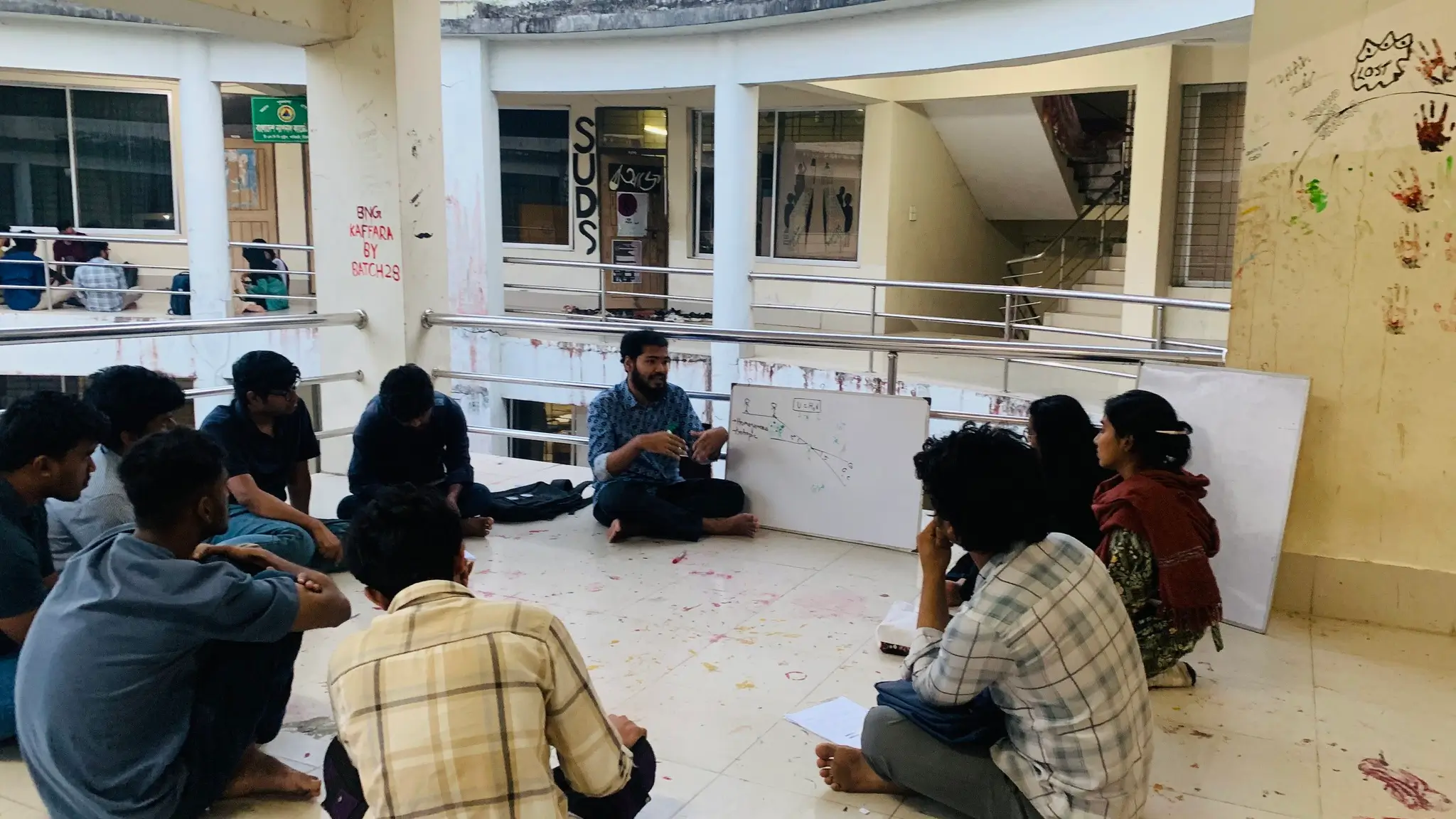
STUDY CIRCLE
Share knowledge, Increase knowledge
Everyone you will ever meet knows something you do not. That is why we arrange several study circles per month where we meet each other and discuss certain topics related to astronomy.
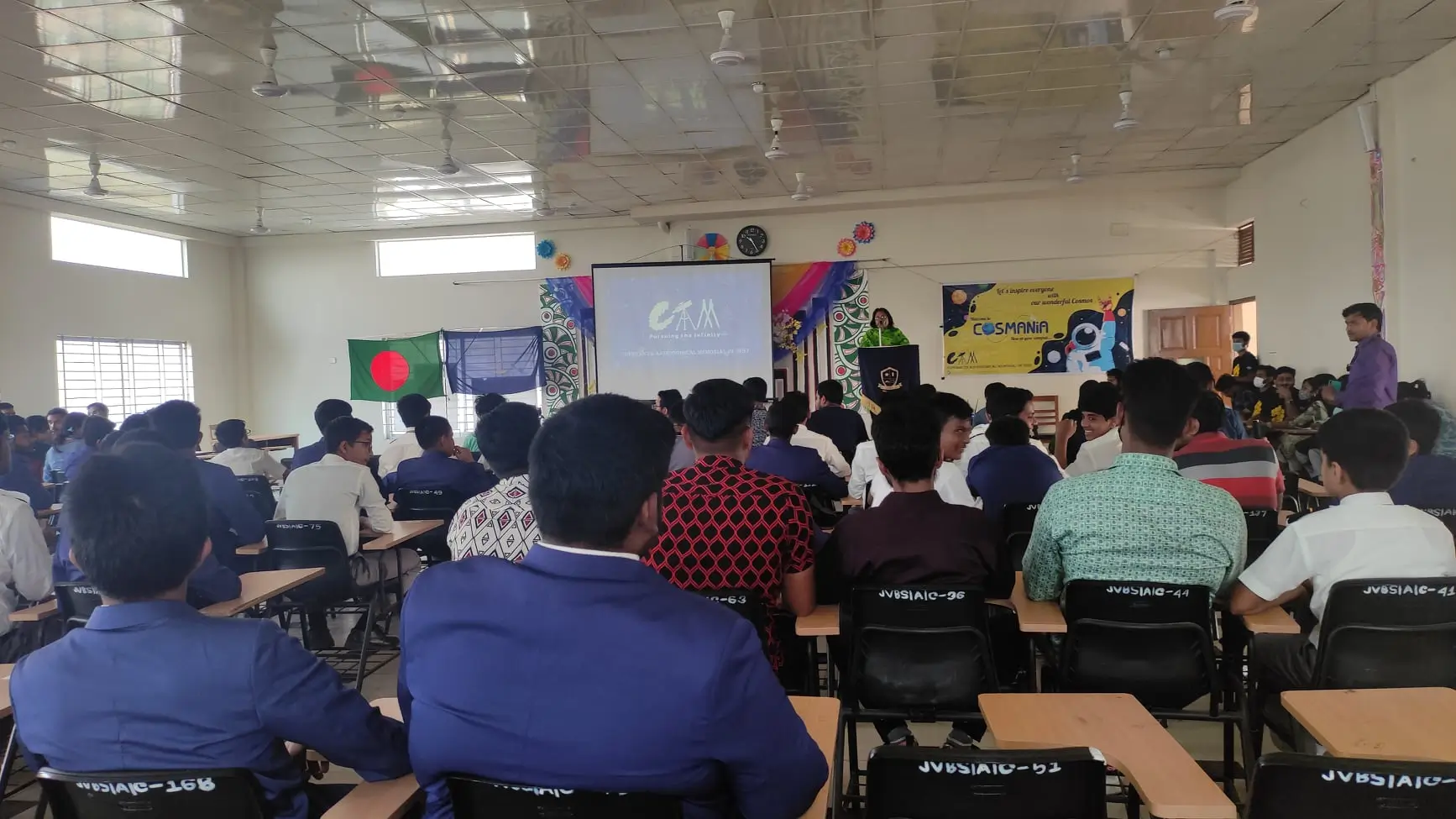
COSMANIA
Spread what you know
If you have the knowledge, let others light their candles in it. That is why we organize school programs in different schools & colleges throughout the country since we are trying to spread curiosity among all.
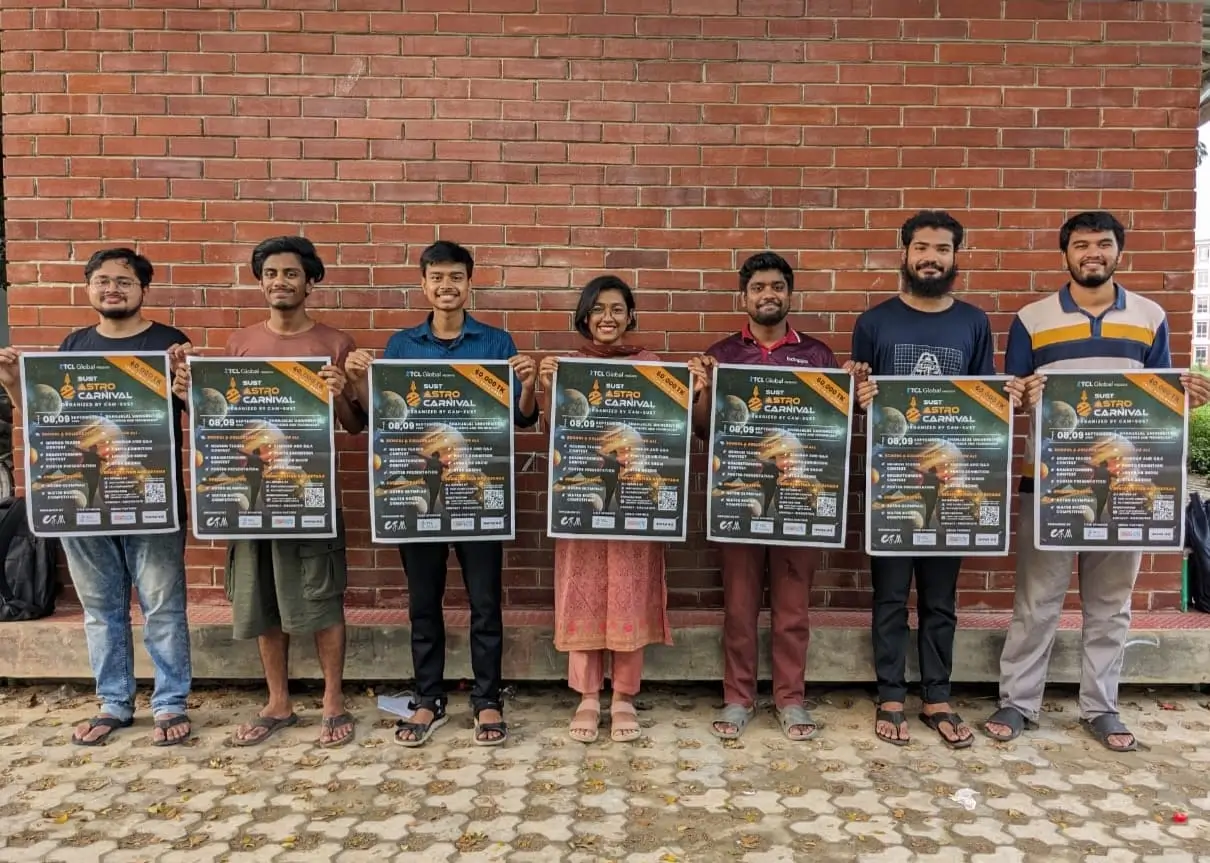
ASTRO CARNIVAL
Learning in a festive way
We organize an Astro carnival once a year for all school, college, madrasa and university students throughout the country. Their participation in the carnival makes our work worthwhile. Their curious eyes tell the rest.

STAR GAZING
Catch a glimpse of the stars
Looking at stars, planets, galaxies, and nebulae we realize that we're just one tiny part of that. Sometimes, we CAM people, gaze into the night sky with a telescope but regularly we do naked-eye stargazing.

CAM-TALK
Conversations that inspire
We are eager to learn more from experts. That is why we invite guest speakers from reputable institutions to share and discuss their expertise, works, and points of view during this event.
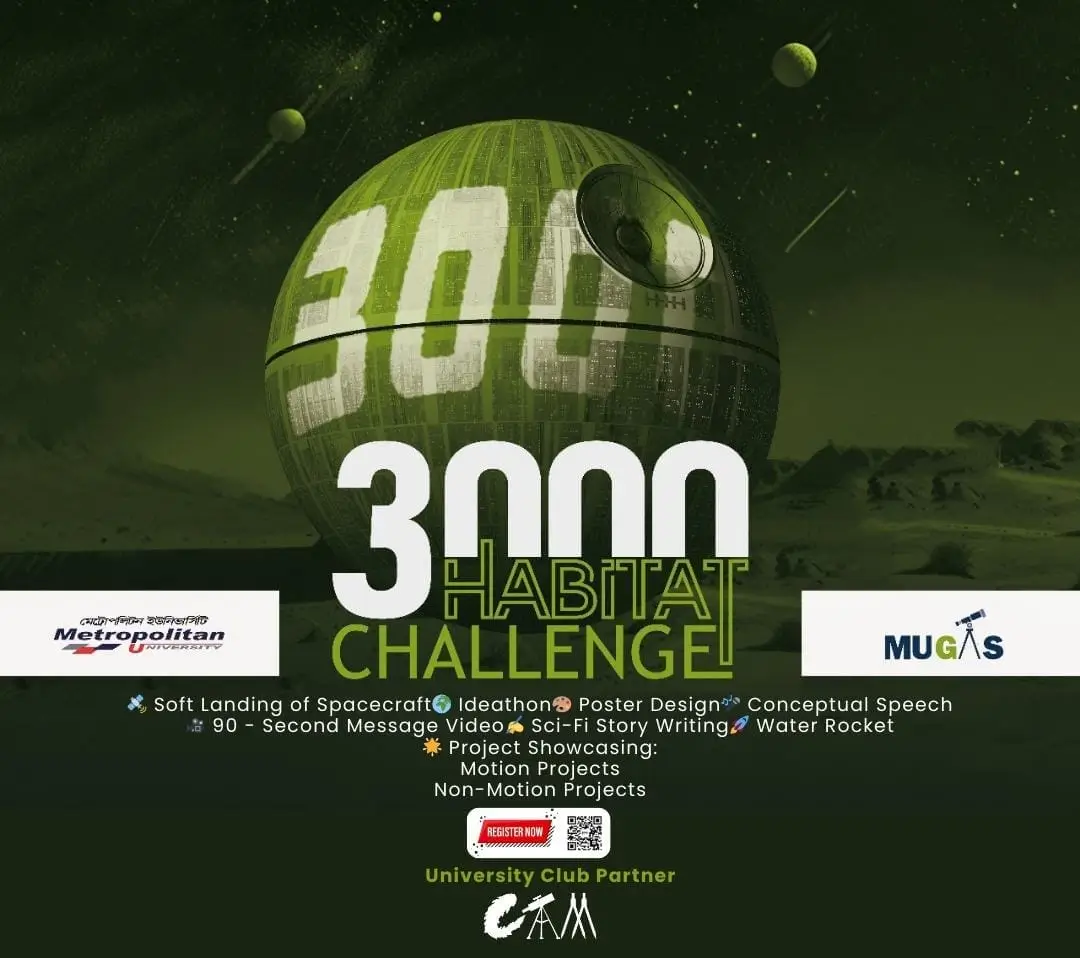
JOURNAL CLUB
Where research meets curiosity
We want to learn about the important and recent works on astronomy. That is why we arrange regular journal talks to discuss and analyze recent astronomical research papers and publications.
Discover our complete range of community events, educational and outreach programs.
Our Magazine
Introducing our inaugural digital publication - a cosmic journey through Bengali skies
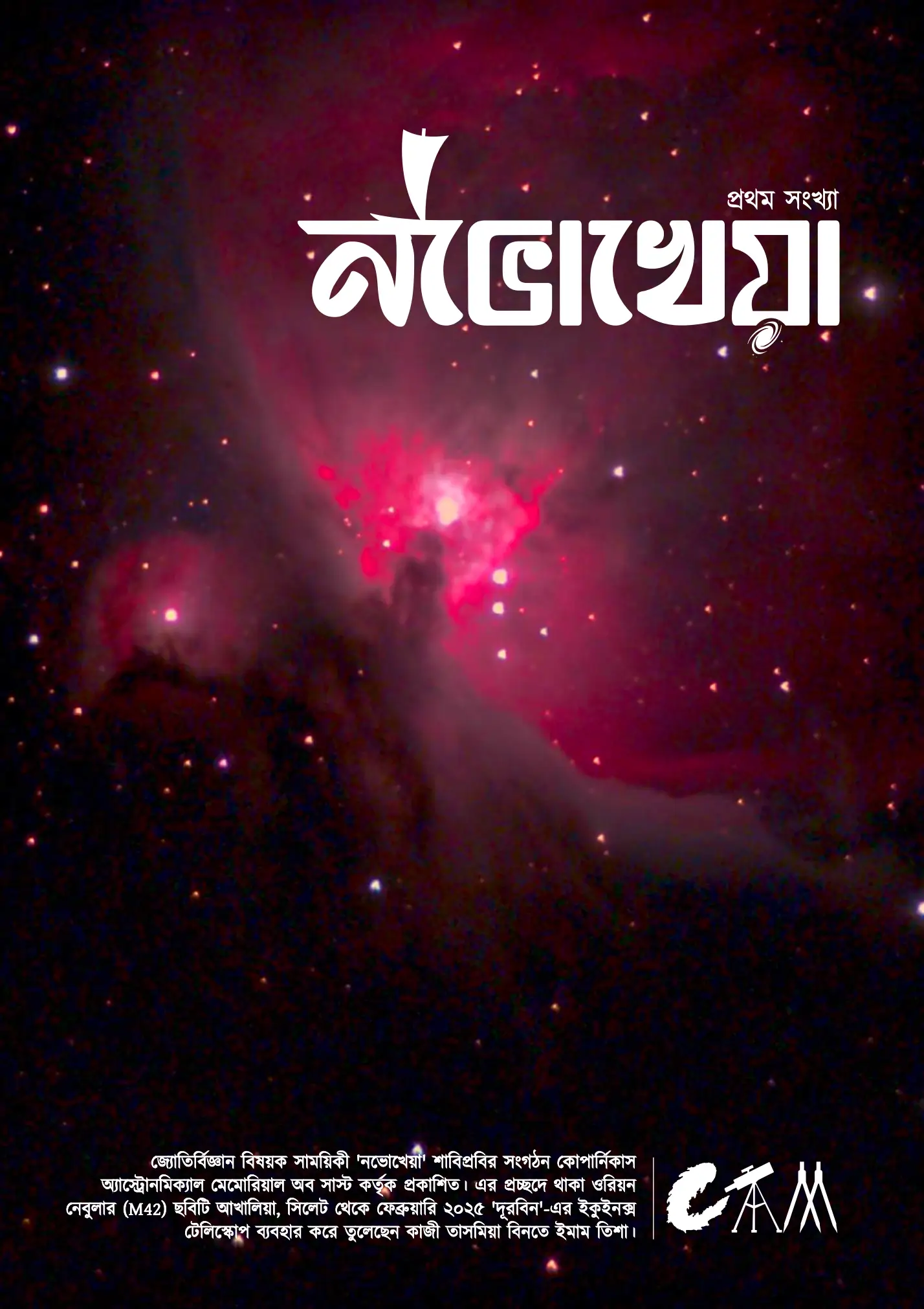
Novokheya
নভোখেয়া - A CAM-SUST Magazine
The astronomy magazine ‘নভোখেয়া’ is published by Copernicus Astronomical Memorial of SUST, an Astronomy Research and Outreach Organization of Shahjalal University of Science and Technology. This is the first issue of the magazine. It is available for anyone to download from here.
Research Papers
Discover our amateur to advance astronomical research projects from our club members
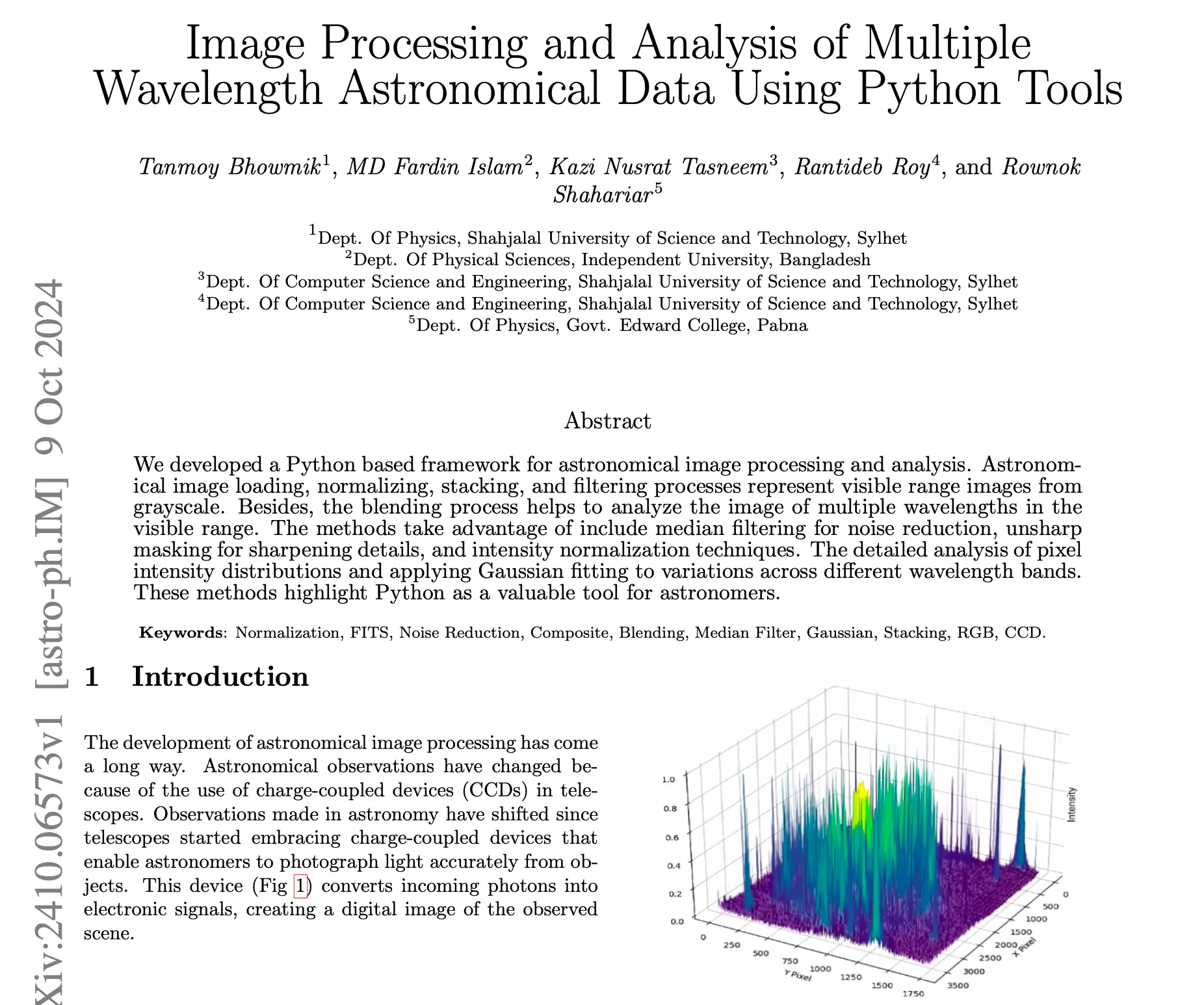
Image Processing and Analysis of Multiple Wavelength Astronomical Data Using Python Tools
We developed a Python based framework for astronomical image processing and analysis. Astronomical image loading, normalizing, stacking, and filtering processes represent visible range images from grayscale. Besides, the blending process helps to analyze the image of multiple wavelengths in the visible range. The methods take advantage of include median filtering for noise reduction, unsharp masking for sharpening details, and intensity normalization techniques. The detailed analysis of pixel intensity distributions and applying Gaussian fitting to variations across different wavelength bands. These methods highlight Python as a valuable tool for astronomers.
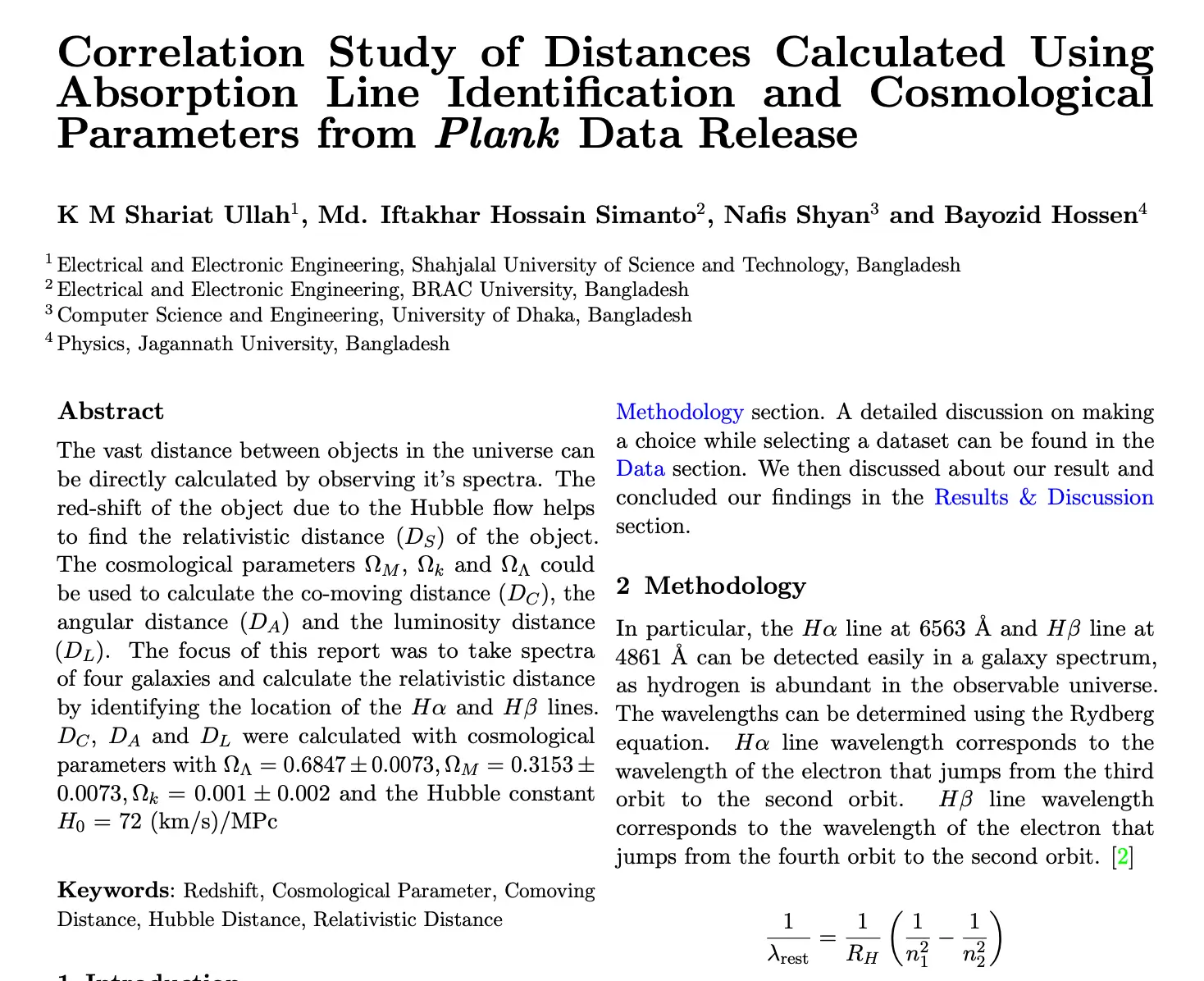
Correlation Study of Distances Calculated Using Absorption Line Identification and Cosmological Parameters from Plank Data Release
The vast distance between objects in the universe can be directly calculated by observing it's spectra. The red-shift of the object due to the Hubble flow helps to find the relativistic distance (DS ) of the object. The cosmological parameters ΩM , Ωk and ΩΛ could be used to calculate the co-moving distance (DC ), the angular distance (DA) and the luminosity distance (DL). The focus of this report was to take spectra of four galaxies and calculate the relativistic distance by identifying the location of the Hα and Hβ lines. DC , DA and DL were calculated with cosmological parameters with ΩΛ = 0.6847 ±0.0073,ΩM = 0.3153 ± 0.0073,Ωk = 0.001 ±0.002 and the Hubble constant H0 = 72 (km/s)/MPc
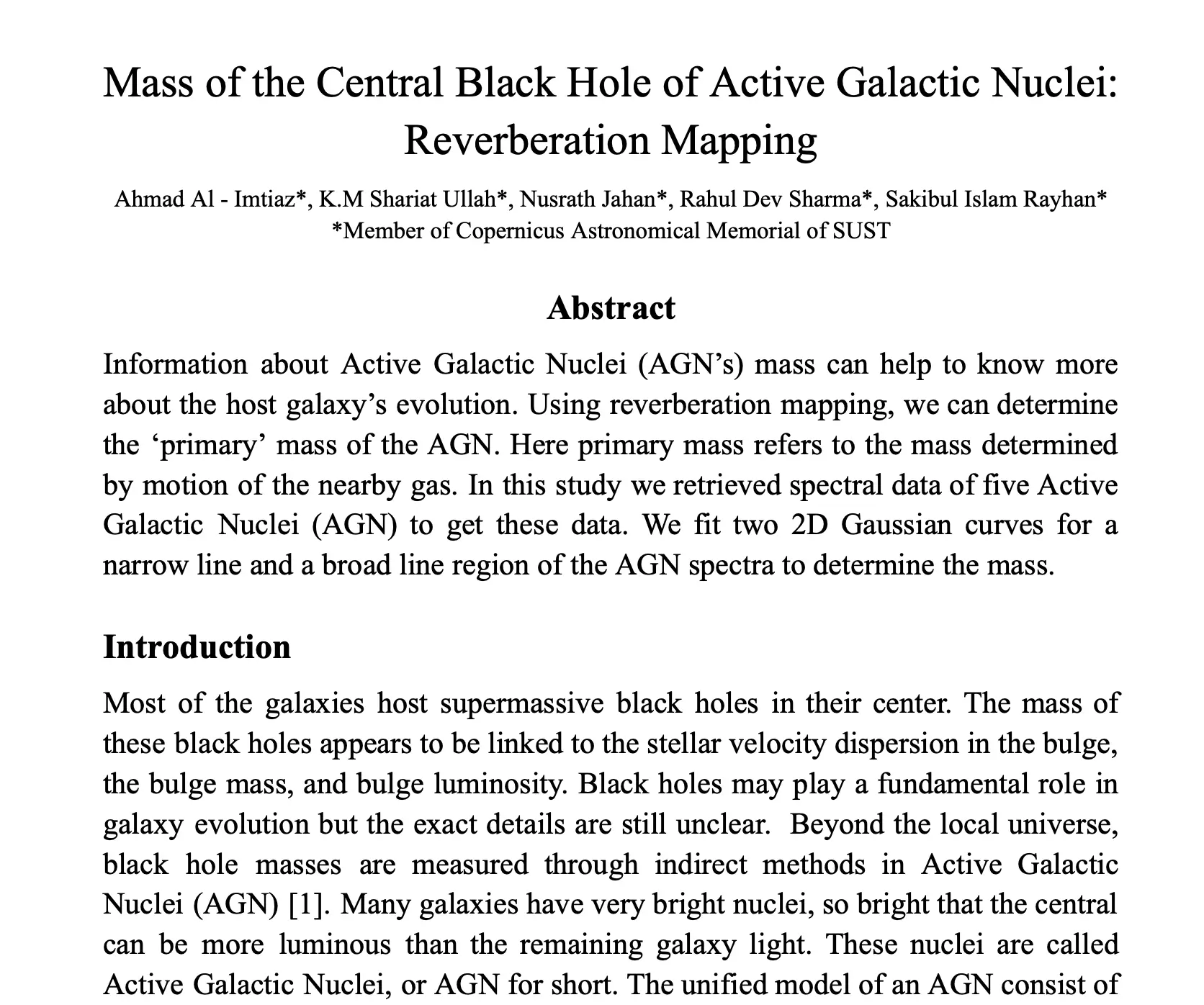
Mass of the Central Black Hole of Active Galactic Nuclei: Reverberation Mapping
Information about Active Galactic Nuclei (AGN's) mass can help to know more about the host galaxy's evolution. Using reverberation mapping, we can determine the 'primary' mass of the AGN. Here primary mass refers to the mass determined by motion of the nearby gas. In this study we retrieved spectral data of five Active Galactic Nuclei (AGN) to get these data. We fit two 2D Gaussian curves for a narrow line and a broad line region of the AGN spectra to determine the mass.
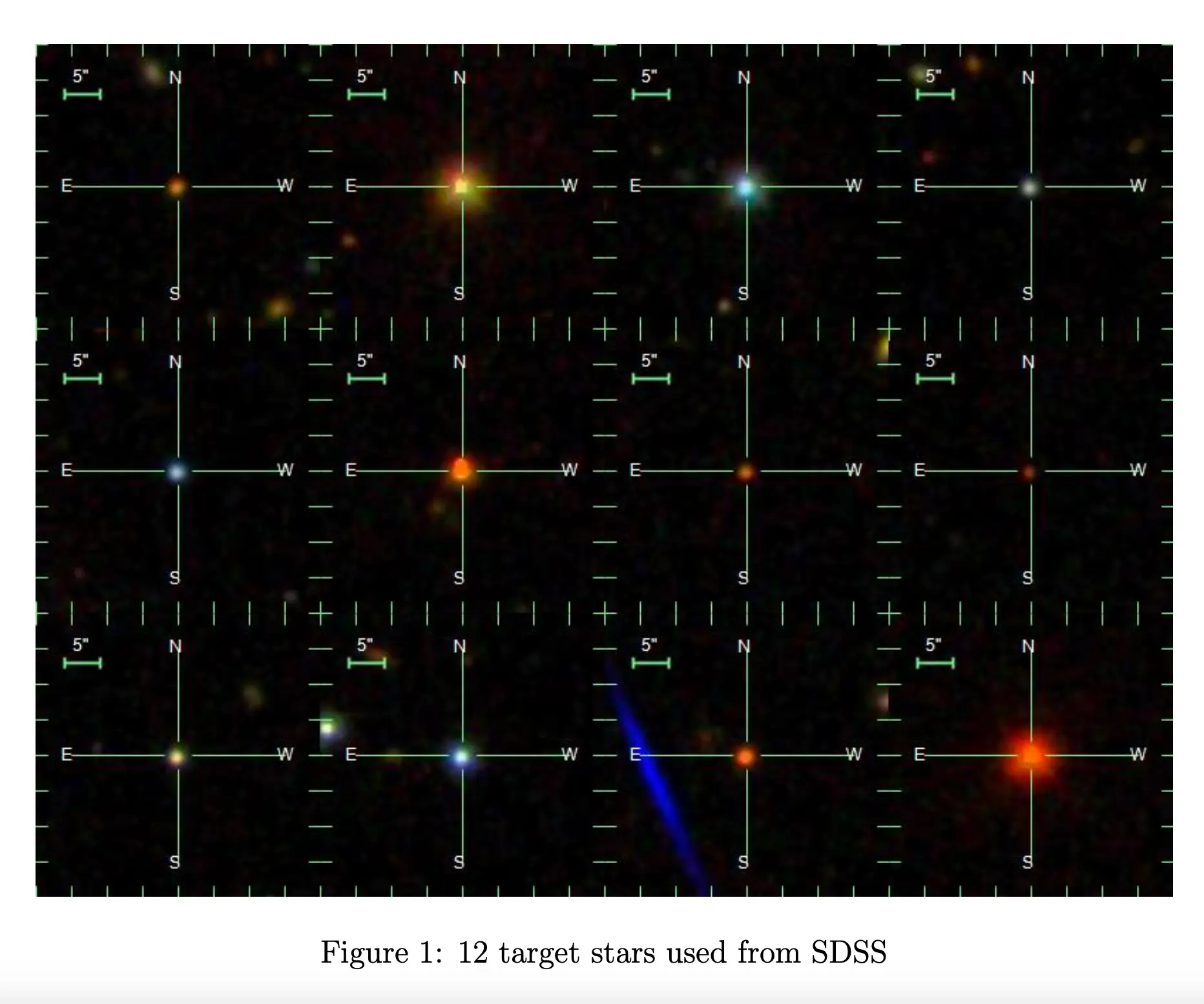
Exploring Evolutionary Track of Individual Stars with Aperture Photometry
This project aims to understand different stages of star evolution by constructing a model Hertzsprung-Russell Diagram. In this study, twelve target stars were particularly selected and their data were collected from the publicly available database of SDSS and we used aperture photometry for our analysis. Our results showed that most of these stars are in the main sequence phase; therefore, they are very important in the star life cycle. We also considered the effectiveness of simple aperture photometry for this kind of analysis. Since our project had to be as simple and accessible as possible, we chose methods that are easy to understand and deliberately avoided complex analyses.
People Talking About Us
Here are a few words from people who have been associated with us or have seen our work.
I am glad to see the students of Shahjalal University of Science and Technology being involved in activities to promote and create interest in science. The Copernicus Astronomical Memorial of SUST is an organization which has been active for several years, to involve the youths of the Sylhet region in creative and scientific activities. I wish CAM-SUST all the best and hope tha...
 Dr. Yasmin HaqueProfessor, Dept. of Physics, @ SUST
Dr. Yasmin HaqueProfessor, Dept. of Physics, @ SUST